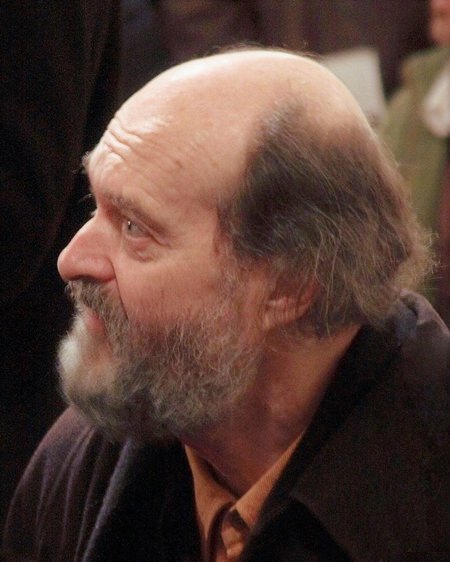
Right then, here’s a question to test your general musical knowledge, so sit up straight and try to look as though you’re interested. How many Estonian composers can you name from memory? Not very many, I’d guess. Possibly one, if you’ve noticed the rather obvious clue on this page. If you managed to come up with the name Arvo Pärt, I will accept that. Collect your modest prize money on the way out.
Estonia is further to the East than you might imagine – even further east than Hungary. As the crow flies, Estonia’s capital city of Tallinn is less than two hundred miles from St. Petersburg. Lying on the crossroads between East and West, Estonia’s culture is rich and varied and several of today’s Estonian composers have drawn freely from it.
The haunting choral works of Veljo Tormis are rooted in folklore and seem to speak of a more distant age. He wrote over five hundred choral works, the majority of which were based on traditional ancient Estonian folksongs. Eino Tamberg was the initiator of the anti-romantic movement in Estonia and he became well-known as a symphonic composer with a distinctive personal style. Today Erkki-Sven Tüür is probably Estonia’s most well-known composer, along with the legendary Arvo Pärt whose music gets performed more often than that of all the other Estonian composers put together.
You’ve probably come across the Estonian conductor Paavo Järvi who is one of the busiest conductors in the business, regularly working with the world’s top orchestras. He is known for his ability to bring out the most profound elements of a piece and has a passion for modern and contemporary orchestral music.
Erkki-Sven Tüür had an interesting musical background. He studied flute and percussion at the Tallinn Music School but in 1979 he led the rock group In Spe which for a time was one of the most popular bands in Estonia. Tüür has since become an award-winning composer with nine symphonies to his credit and an enormous quantity of chamber music.
This engaging work was written in 2014 and was a commission from the Bamberg Symphony Orchestra. With its driving incisive rhythms, the work evokes barbaric images and dramatic moments of high tension. The orchestral writing is brilliant though this full-blooded music is not for the faint-hearted. Despite all the harmonic complexity there are strong tonal elements and the work even ends on a slightly ambiguous version of a C major chord. Notice, by the way how conductor Paavo Järvi holds the silence at the end of the piece for a full eighteen seconds before the audience begins to applaud.
It’s been said that the music of Arvo Pärt, inspired by ancient sacred traditions speaks to everyone. However, in his early days, Pärt wrote in an astringent neo-classical style and was influenced by Shostakovich, Prokofiev, and Bartók. Then he ventured into a twelve-tone serial technique but this earned him the displeasure of the Soviet administration and also proved to be a creative cul-de-sac. Pärt went through a long period of creative and contemplative silence absorbing himself in plainsong and Gregorian chant.
Spiegel im Spiegel (“mirrors in the mirror”) dates from 1978 and uses a style of writing that Pärt developed and named tintinnabuli, influenced by the composer’s mystical experiences with chant music. It signified a new minimalist simplicity but it’s based on a unique system of rules linked with Orthodox and Gregorian aesthetics. The melodic elements float upwards and downwards, sometimes moving only slightly before beginning a new motion in a different direction. Performing this piece is something of a challenge because the pianist has to maintain a steady pace without emphasizing any of the notes and the cellist has to maintain an unwavering even tone over the entire piece.
On the surface the music seems simplicity itself: slow repeated arpeggios in F major from the piano and fragments of floating sustained melody from the cello moving from one note to the other. Yet, this is a work of incredible beauty that seems to touch the eternal. It might even appear to reach inside you and speak to the very essence of your being. This music can produce a powerful inner experience and inexplicably brings many people to tears. When the music draws to a close, the emptiness and silence are almost painful.
 |
 |
 |





